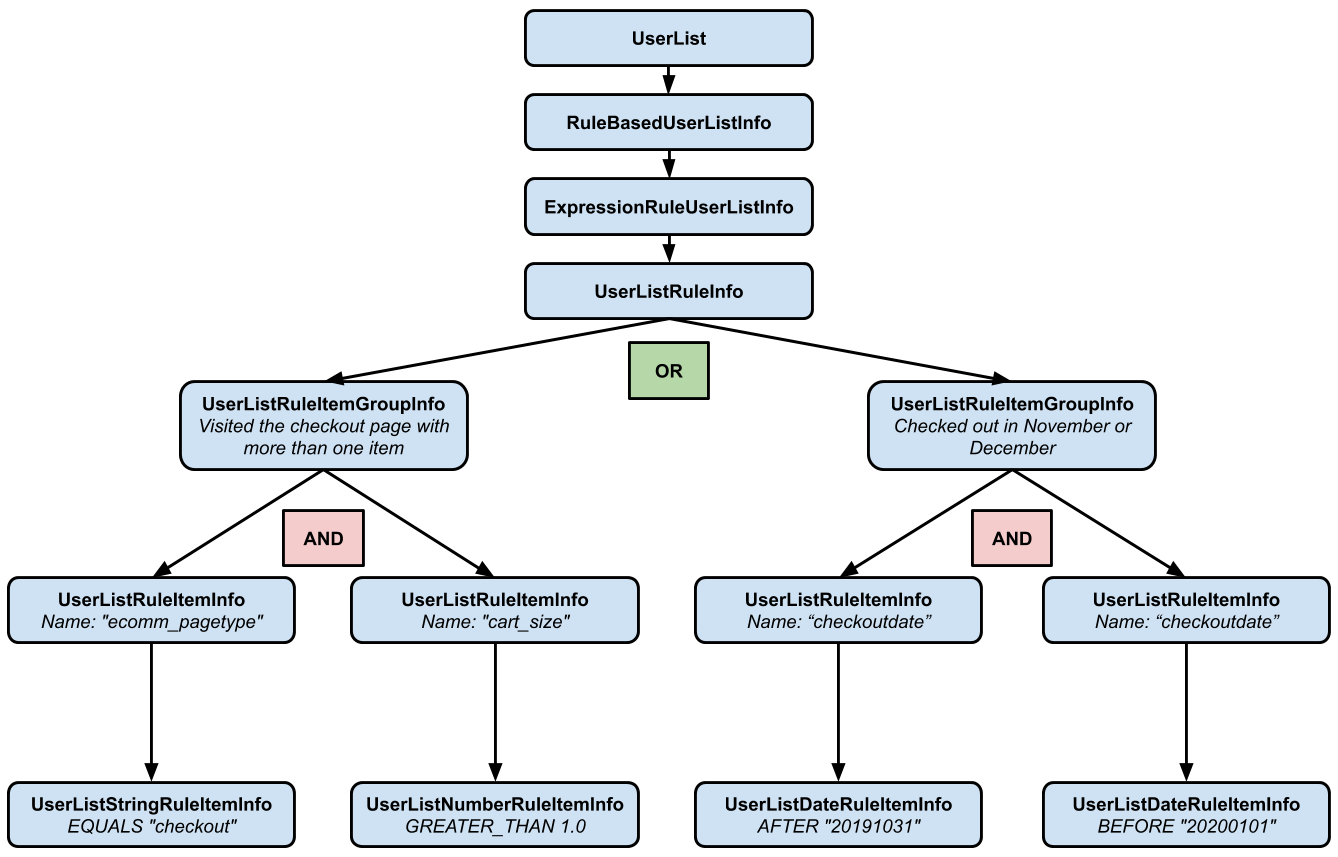Kullanıcıların aşağıdaki özelliklerini yakalamak için çeşitli özel yeniden pazarlama etiketi parametreleri yapılandırdığınız bir siteniz olduğunu varsayalım:
event- Sitenizdeki sayfanın kategorisi (ör. ödeme, alışveriş sepeti vb.)cartsize- Kullanıcının alışveriş sepetindeki öğe sayısı.checkoutdate: Kullanıcının ödeme yaptığı tarih. Bu parametreyi yalnızca kullanıcı bir satın alma işlemini gerçekten tamamladığında ayarlarsınız.
Alışveriş sepetlerine birden fazla ürün ekleyen ve ödeme sürecini başlatan kullanıcılara daha fazla gösterim göstermek istiyorsunuz. Ayrıca, Kasım ve Aralık aylarında sitenizde büyük bir indirim yapmayı planladığınız için bu aylarda satın alma işlemi yapan kullanıcıları bulmak istiyorsunuz.
Bu kullanıcı grubunu aşağıdaki kurallardan biriyle tanımlayabilirsiniz:
- Ödeme sayfasını ziyaret eden ve sepetlerinde birden fazla öğe bulunan kullanıcılar.
- Kasım veya Aralık aylarında ödeme yapan kullanıcılar
Bir kullanıcı 1. veya 2. kategoriye giriyorsa belirli reklam gruplarında ya da kampanyalarda tekliflerinizi %25 artırmak istiyorsunuz.
Nesneler
Kurala dayalı kullanıcı listesinin yapısına göz atın. Kural tabanlı bir liste, Google Ads API'de rule_based_user_list olarak gösterilir.
Aşağıdaki şemada, bu kullanım alanıyla ilgili rule_based_user_list tamamlandığında nasıl görüneceği gösterilmektedir.


